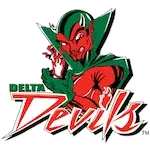Game Preview Pittsburgh Panthers @ West Virginia Mountaineers
The Backyard Brawl renews one of college basketball’s most intense regional rivalries as the Pittsburgh Panthers visit the West Virginia Mountaineers. Both programs enter at 3-0, each building early-season momentum while looking to validate their unbeaten starts against the toughest opponent either has encountered to this point. This marks the 192nd meeting between the rivals, with West Virginia holding the historical edge and typically performing with elevated urgency in Morgantown.
The Mountaineers return home after a decisive win over Lehigh, using extended preparation time to sharpen defensive structure and refine rotations. With a new coaching staff emphasizing emotional control, West Virginia aims to avoid the common volatility that accompanies rivalry games. Pitt arrives after a 12-point win over Eastern Michigan, showing depth across its rotation but still awaiting clarity on the availability of leading scorer Brandin Cummings, whose ankle injury places him as a game-time decision.
This matchup also fits broader betting themes explored in advanced learning resources such as handicap betting, unit sizing, and how odds work. Rivalry games frequently compress scoring margins, creating environments where efficiency, rebounding, and pace control drive outcomes more than raw scoring talent.
Odds and Key Information
West Virginia enters as a -5.5 home favorite, backed by a defensive profile that aligns with slower tempo and lower-possession basketball. Pitt sits at +210 on the moneyline, with the total at 133.5. This number reflects the contrast in pace rather than any expected scoring explosion.
Game details:
• Date: November 13, 2025
• Location: WVU Coliseum, Morgantown, WV
• TV: FS1
• Spread: West Virginia -5.5
• Total: 133.5
• Moneylines: WVU -260, Pitt +210
From a market behavior standpoint, the number aligns with trends outlined in guides such as winning margin meaning and alternate total points. Home-court advantages with defensive-oriented teams typically receive early support from bettors, while totals in rivalry games trend under unless both teams rank among the fastest-paced in the nation.








Pittsburgh Outlook
Pitt’s unbeaten record has been built on balanced scoring and strong rebounding. Cameron Corhen provides interior stability, producing efficiently around the basket while maintaining consistent energy on the defensive end. Damarco Minor has emerged as a multipurpose contributor, offering scoring, rebounding, and ball distribution in equal measure. The Panthers average 76.7 points per game on 45.1 percent shooting, including 36.9 percent from three-point range. Their free-throw efficiency and volume also stand out, with 19.3 made free throws per contest ranking inside the national top 100.
Their challenge lies in managing the potential absence of Brandin Cummings, whose 18.5 points per game often provide the spark required to break through physical defenses. Without him, Pitt must rely more heavily on Corhen and Minor to generate half-court offense. Their ability to stay composed under pressure is essential, especially against a West Virginia team that thrives on defensive disruption. Strategic frameworks found in guides like sports betting for beginners and props analysis support evaluating matchups through tools such as pace projections and offensive distribution rather than star-centric scoring alone.
Pitt has been reliable against the spread early, entering at 2-1 ATS. Their perimeter shooting and rebounding give them tools to stay competitive in lower-possession games.
West Virginia Outlook
West Virginia’s early-season success is grounded in defensive strength and disciplined tempo control. The Mountaineers average 70.7 points per game but allow far fewer, limiting opponents with physical interior play and well-structured rotations. Their most recent win over Lehigh showcased a standout effort from Brenen Lorient, who delivered 26 points and seven rebounds while shooting efficiently inside. His presence around ball screens provides vertical spacing crucial for West Virginia’s half-court attacks.
Harlan Obioha’s 12 points and eight rebounds in the same matchup helped stabilize the interior. With a tempo registering only 64.7 possessions per game, West Virginia prefers controlled pace, long possessions, and defensive pressure. Slower games often shape totals markets significantly, aligning with concepts discussed in guides such as what is live betting and future betting concepts.
The Mountaineers are 3-0 straight up, consistently meeting expectations at home. Their defensive predictability gives them the ability to dictate style, forcing opponents to adjust to their rhythm rather than the other way around.
Key Matchup Table
| Key Area | Advantage |
|---|---|
| Half-court scoring execution | Pittsburgh |
| Defensive intensity | West Virginia |
| Rebounding stability | West Virginia |
| Perimeter efficiency | Pittsburgh |
Betting Trends
Pitt enters 2-1 ATS, outperforming early expectations through efficient perimeter shooting and stable rebounding. Their ability to generate free throws and maintain rhythm in the half court suits games where pace slows dramatically. Underdogs in slow-tempo rivalries historically generate more ATS value, a principle also reflected in portfolio-related concepts such as risk management in betting and broader performance indicators.
West Virginia is perfect at home and undefeated straight up. Their ATS outcomes, however, tend to be more variable due to their slow pace. Lower-possession favorites often struggle to create separation, especially late in games that hinge on clock management. Their defense typically sharpens in rivalry settings, but that does not necessarily translate to large winning margins.
These patterns mirror principles from spread fundamentals and parlay construction, where understanding momentum, efficiency, and volatility is essential.
Prediction
This matchup profiles as a defensive, possession-controlled contest. Pitt’s scoring versatility and perimeter presence give the Panthers the tools to keep the game tight, particularly if Cummings is able to contribute. West Virginia’s defense and home-court edge should still determine pace and structure, but the Mountaineers’ style often leads to narrow margins rather than separation.
Spread Lean: Pittsburgh +5.5
Total Lean: Under 133.5
Projected Score: West Virginia 67, Pittsburgh 64
Why Do You Need Picks
Rivalry games with reduced margins and slow tempo require precision in evaluating spreads and totals. Access to expert analysis helps bettors avoid emotional biases often tied to historic matchups. Tools and concepts explained in resources like how betting odds work and live betting strategies highlight how quickly lines shift when tempo and injury information becomes public.
Managing exposure through disciplined unit sizing, as outlined in unit strategy, further emphasizes why structured guidance matters. For bettors seeking sustained profitability across NCAAB markets, the ScoresAndStats Handicappers Leaderboard provides access to verified long-term performance and expert insight. With rivalry volatility and tight lines, trustworthy picks become an essential tool for identifying value and managing risk across the season.









